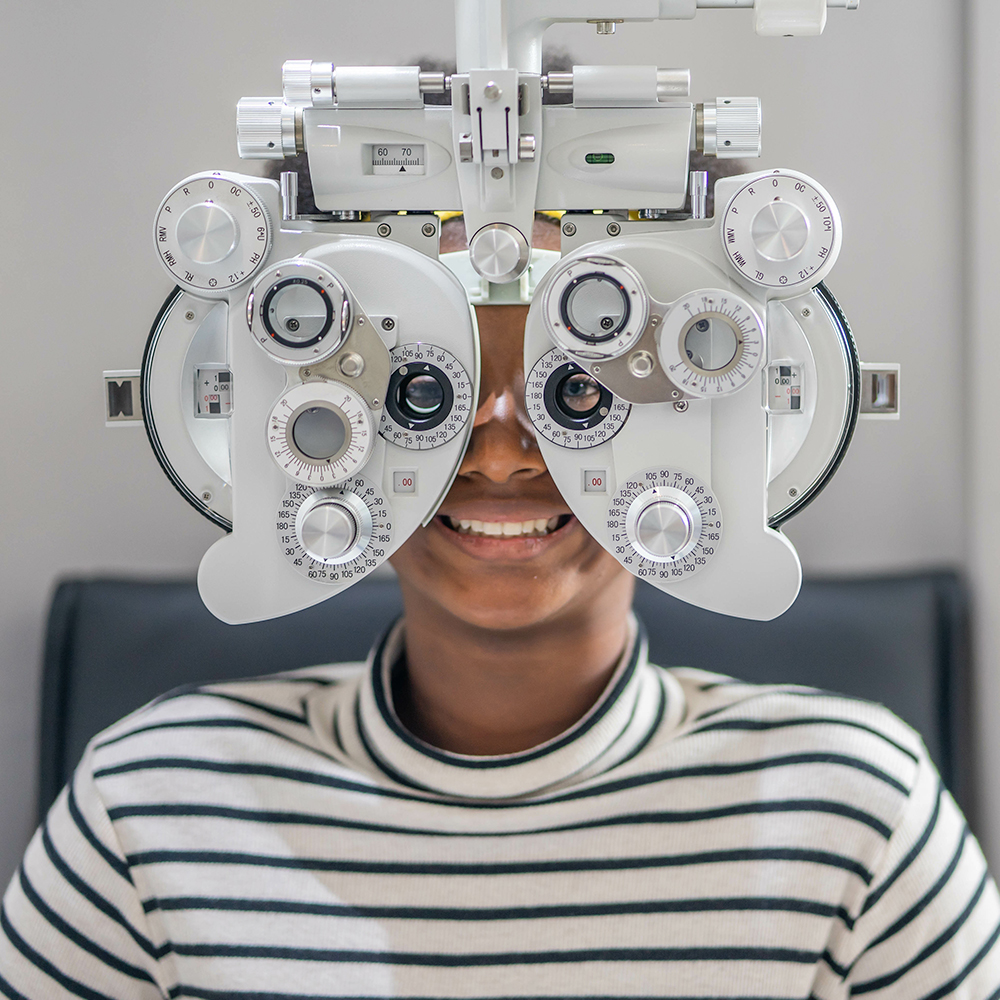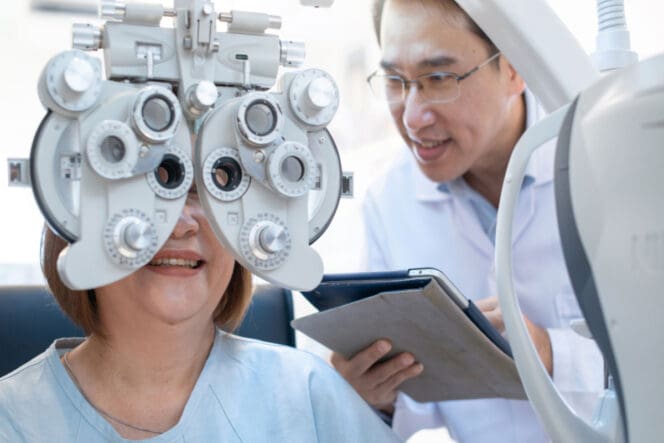Discover the Best Optometrist Chino for Comprehensive Eye Care
Discover the Best Optometrist Chino for Comprehensive Eye Care
Blog Article
Exploring the most recent Technological Advancements in Optometry and What They Mean for Eye Doctors
From the accuracy of Optical Comprehensibility Tomography to the nuanced understandings supplied by AI-driven analysis devices, these innovations are setting new requirements in client analysis and treatment. As these developments permeate the practice, eye doctors are encountered with the difficulty of accepting these devices to improve patient outcomes.
Innovations in Diagnostic Tools
Advancing the area of optometry, innovations in analysis devices have transformed the method eye care experts assess and detect visual disabilities and eye problems. The past decade has actually seen substantial technological developments, making it possible for more extensive and exact examinations. Optical Coherence Tomography (OCT), for instance, supplies high-resolution cross-sectional photos of the retina, enabling the early detection of conditions such as glaucoma and age-related macular deterioration. This non-invasive imaging technique has actually come to be crucial in modern optometric method.
One more trick innovation is the intro of sophisticated corneal topography systems, which map the surface area curvature of the cornea with precision. These devices are especially helpful for suitable call lenses and diagnosing corneal disorders. Moreover, electronic retinal imaging has actually transformed traditional ophthalmoscopy, using in-depth, breathtaking views of the retina that assist in comprehensive aesthetic assessments.
The growth of wavefront aberrometry has likewise been vital, allowing the analysis of refractive mistakes with unequaled precision (Eye Doctor). This technology assists in tailoring corrective lenses and improving surgical results for refractive surgical treatments. Jointly, these analysis innovations empower optometrists to provide remarkable client care, guaranteeing very early intervention and tailored treatment approaches, ultimately enhancing aesthetic health results
AI in Person Management
Building on the foundation of innovative analysis devices, the incorporation of synthetic intelligence (AI) in client monitoring represents a transformative jump for optometry. AI systems are increasingly used to boost efficiency, precision, and customization in individual treatment.
In addition, AI-driven systems promote structured individual communications and management processes. Automated organizing, virtual appointments, and personalized follow-up plans not only improve client complete satisfaction but additionally enhance time monitoring for experts. These systems can triage patients based upon the seriousness of their problems, making certain that those in crucial need receive timely focus.
Additionally, AI boosts decision-making by offering optometrists with evidence-based referrals and treatment paths. By incorporating data from electronic wellness records, AI devices use understandings that notify medical choices, minimizing the risk of mistakes and enhancing person results. As AI proceeds to progress, its duty in client management will likely expand, improving the landscape of optometric treatment.
Advancements in Retinal Imaging
In the realm of optometry, retinal imaging has actually seen remarkable technical developments that are boosting analysis capabilities and individual treatment. Developments such as Optical Comprehensibility Tomography (OCT) and fundus photography have actually revolutionized just how eye doctors envision and assess the retina. OCT, specifically, supplies high-resolution, cross-sectional pictures of the retina, allowing for the detailed exam of its layers. This capacity is important for early discovery and administration of problems like glaucoma, diabetic person retinopathy, and age-related macular deterioration.
Improved imaging modalities like OCT angiography are additional refining analysis accuracy. Optometrist Chino. Such innovations help with the recognition of minute retinal adjustments that can indicate illness development.
In addition, improvements in expert system are enhancing retinal imaging by enabling automatic analysis of large datasets. These systems help optometrists in recognizing patterns a sign of pathology, thus enhancing diagnostic accuracy and efficiency. Jointly, these advancements are changing retinal imaging into a foundation of modern eye treatment, boosting end results and expanding therapeutic opportunities.
Teleoptometry's Growing Duty
Teleoptometry is significantly coming to be an important component of eye care, driven by improvements in data and analysis devices. As optometry welcomes digital improvement, teleoptometry helps with remote appointments, enabling eye doctors to prolong their solutions beyond conventional borders. This is especially beneficial in country and underserved areas where access to specialized eye care is commonly minimal. By leveraging high-resolution video conferencing and progressed retinal imaging, optometrists can perform comprehensive eye examinations from afar, making sure timely diagnosis and treatment.
The integration of expert system (AI) further enhances teleoptometry, enabling the evaluation of visual data and aiding in the detection of ocular conditions such as glaucoma and diabetic retinopathy. AI-powered algorithms can swiftly interpret complex imaging data, giving eye doctors with beneficial insights that boost clinical decision-making.
Additionally, teleoptometry supports continuity of care through smooth integration with digital wellness documents (EHRs), allowing eye doctors to preserve detailed person backgrounds. This makes certain that individuals receive consistent and personalized treatment even when talking to different specialists.
In spite of these advantages, obstacles continue to be, consisting of ensuring information security and handling patient expectations. Nevertheless, teleoptometry stands for a significant stride in the direction of more available, reliable, and patient-centered eye care. As technology progresses, its function is poised to increase better.

Future Patterns in Eye Treatment
A myriad of ingenious patterns is established to reshape the future of eye care, driven by technical developments and the developing needs of patients. One considerable pattern is the assimilation of man-made knowledge (AI) in diagnostics, which assures to improve the accuracy and performance of eye examinations. AI algorithms the original source can analyze substantial quantities of data from retinal photos, possibly finding conditions like diabetic retinopathy and index glaucoma earlier than traditional techniques.
Moreover, individualized medication is gaining traction in optometry, with hereditary screening educating personalized therapy plans. This approach intends to enhance person end results by customizing treatments to individual hereditary profiles. Wearable technology, such as wise call lenses, is additionally imminent, supplying real-time surveillance of intraocular stress or sugar degrees, therefore offering continuous insights right into systemic and eye wellness.
The fostering of enhanced truth (AR) and virtual reality (VIRTUAL REALITY) in training and patient education is another arising fad. These innovations offer immersive experiences that can improve understanding and abilities both for patients and optometrists. As these trends progress, eye doctors must stay abreast of technological advancements to offer sophisticated care, guaranteeing improved individual outcomes and complete satisfaction in the dynamic landscape of eye treatment.
Conclusion

Collectively, these analysis improvements equip eye doctors to deliver exceptional individual care, guaranteeing early treatment and customized treatment methods, inevitably boosting visual wellness outcomes.

As these innovations proceed to evolve, eye doctors must adjust and incorporate them right into method, ultimately enhancing process performance and boosting the criterion of eye care delivered to clients.
Report this page